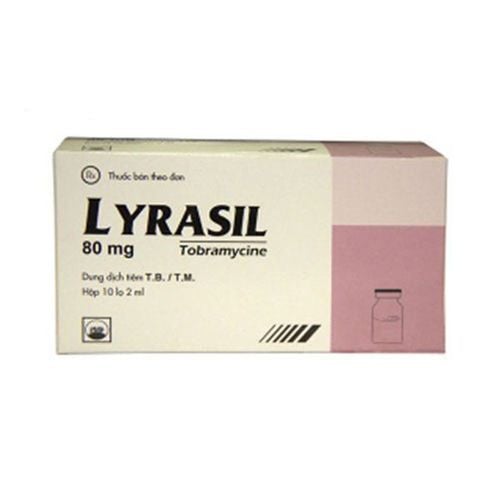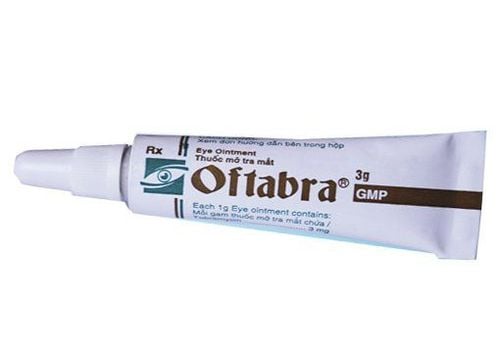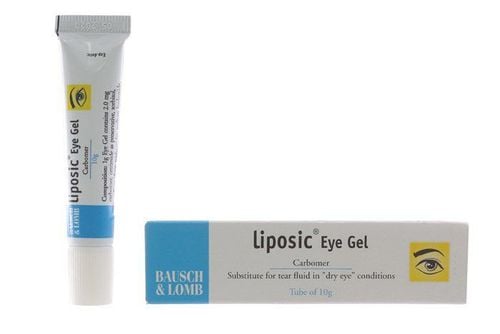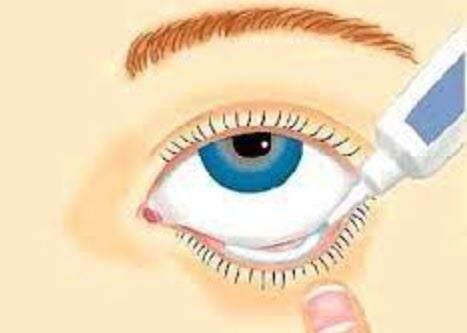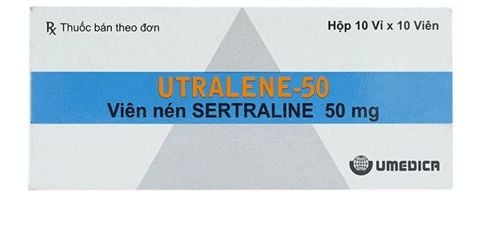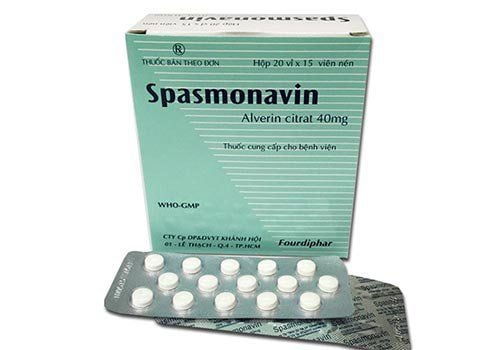This is an automatically translated article.
Eyracin belongs to the group of drugs used to treat eyes, ears, nose and throat. The drug is indicated for the treatment of bacterial infections of the eye due to many causes. Compliance with indications and doses of Eyracin will help patients improve treatment effectiveness and avoid unwanted side effects.1. What is Eyracin?
Eyracin medicine contains the main ingredient Tobramycin 10.5mg, and other excipients just enough provided by the manufacturer. The dosage form of the drug is in the form of eye ointment, the packaging is in the form of a box of 1 tube of 3.5g. Eyracin belongs to the group of aminoglycoside antibiotics with bactericidal effect. This drug is active against many gram-negative and gram-positive aerobic bacteria such as:
Gram-positive aerobic bacteria such as Staphylococcus aureus. Gram-negative aerobic bacteria: Citrobacter sp. Enterobacter spp. Escherichia coli Klebsiella sp. Morganella. The drug is not active against Chlamydia, fungi, viruses and most other anaerobes. It acts by inhibiting protein synthesis in susceptible bacteria by irreversibly binding to the 30s ribosomal subunit.
2. What are the uses of Eyracin?
Eyracin is indicated for the treatment of the following cases:
Infections of the outer part of the eyeball and its appendages caused by bacteria. The drug is used safely and effectively in children. In addition, Eyracin is contraindicated in the following cases:
The patient is allergic to the active ingredient Tobramycin or other excipients contained in the drug.
3. Dosage and how to use Eyracin
3.1. How to use
When using Eyracin eye ointment, the patient needs to do:
Wash hands before applying the medicine. Remove the cap from the tube. Tilt your head down slightly and pull your lower eyelid down slightly to create a pocket. Put the tip of the medicine back into the place where the medicine is to be applied. Gently squeeze the tube to make a thin line of ointment along the inside of the lower eyelid. Avoid getting the medicine in your eyes. Close your eyes for a moment, then blink a few times to let the ointment spread and work faster. Apply the medicine in the same way to the other eye. Close the cap of the vial to prevent the tube from becoming contaminated.
3.2. Dosage
Every day, apply 2 to 3 times into the eye, each time with an amount of medicine about 1.5cm in size. Dosage may be increased in severe infections. Note: The above is only the recommended dosage of the manufacturer. Depending on the different medical conditions, the doctor will base on that to prescribe the appropriate use with the appropriate dose and concentration. Patients should strictly follow the doctor's instructions before taking the drug.
4. Eyracin side effects
Doctors always consider between the benefits that Eyracin brings to the patient and the possible risk of side effects to prescribe the appropriate medication.
Side effects usually occur with a low incidence in patients with normal renal function when the prescribed dose and duration of treatment are not exceeded. In the elderly, in patients with renal impairment, when used in excess of the recommended dose and duration of treatment, the risk of adverse events will increase. The typical side effects reported are cochlear toxicity of the 8th nerve such as dizziness, nystagmus, tinnitus, and hearing loss.
Some other side effects that have been reported include:
Swelling, eyelid itching, conjunctival congestion. Anemia, granulocytopenia, thrombocytopenia, fever, rash. Digestive disturbances such as nausea, vomiting, loose stools, headache, somnolence, confusion and disorientation. Note: Usually side effects usually go away when the medication is stopped. In addition to the side effects listed above, Eyracin may cause other unwanted effects that have not been fully identified. Therefore, at any time when the patient takes the medicine, if any unwanted effects occur, immediately notify the doctor or pharmacist.
5. Eyracin drug interactions
During the use of Eyracin, drug interactions may occur when used in combination with other drugs or food that have not been clearly identified. In order to avoid possible harmful interactions, patients need to inform their doctors about the drugs they are using, including functional foods and herbal medicines,...
When using Eyracin in combination with Eyracin Other drugs with ototoxicity and nephrotoxicity such as Streptomycin, Kanamycin, Gentamicin, Cephalosporin, Polymyxin B and Colistin may enhance the effects of these drugs. Therefore, in the case of using these drugs in combination, it is necessary to adjust the dose accordingly, in order to limit the occurrence of side effects of the drug.
6. Notes when taking Eyracin
Some notes when patients use Eyracin medicine as follows:
Do not use the drug for a long time due to the risk of superinfection in the eye as well as slow healing of corneal wounds. The vial should not be shared by more than one person to prevent infection and should not be used more than 15 days after first opening. The patient takes the medicine exactly as directed by the doctor. When the clinical symptoms have improved, the patient should not stop taking the drug suddenly. Patients must check the expiration date listed on the manufacturer's packaging, if the expiration date has expired, it should not be used. Each drug has a different shelf life recommended by the manufacturer, when the drug has expired, it should not be used and disposed of properly. The drug may affect vision while driving and operating machinery. Therefore, be careful when using this group work. It is possible to suspend work until the extent of the effect of the drug on the patient is determined. Pregnant women: Eyracin can cross the placental barrier, so there is a risk of affecting the fetus, miscarriage, malformation,... Therefore, this drug is only used for pregnant women when prescribed by a doctor and really necessary in the course of treatment, having weighed the benefits of treatment for the mother and the potential risk to the fetus. Lactation: According to clinical studies, Eyracin is known to be excreted in breast milk, so the drug may affect the baby while the mother is breastfeeding. In case a nursing patient must take Eyracin, breast-feeding may be discontinued before starting treatment. The medicine should be stored in a cool, dry place, away from heat and direct light. Once used up, the patient should throw away the tube after the course of treatment within 5 days, even if there is still some medicine left. Do not leave the tube open if you want to use it next time. The medicine should be used immediately after opening the vial. The patient should not store or reuse the opened ampoules for the next dose as these do not contain preservatives. When applying medication, do not let the tip of the tube touch the eyelid.
7. What to do in case of missed dose or overdose of Eyracin?
When the patient forgets to take Eyracin, take the dose as soon as he remembers. The drug can be taken about 1-2 hours after the daily scheduled dosing time without affecting the treatment. Absolutely avoid taking the double dose of the medicine when you have forgotten the medicine. The missed dose may be skipped when it is almost time for the next scheduled dose. If you accidentally overdose on Eyracin as directed by your doctor, the patient should stop taking the drug immediately, self-monitor for other possible side effects. When the symptoms become more severe, the patient should be taken to the hospital immediately for timely treatment to avoid serious complications. Patients should also remember to bring used medicines with them so that the doctor can understand the information and handle it quickly and promptly. The above article has given relevant information on the use, uses, dosage and some notes when using Eyracin. While taking the drug, the patient should follow the doctor's instructions. Note, Eyracin is a prescription drug, patients can only use this drug when prescribed by a specialist.




